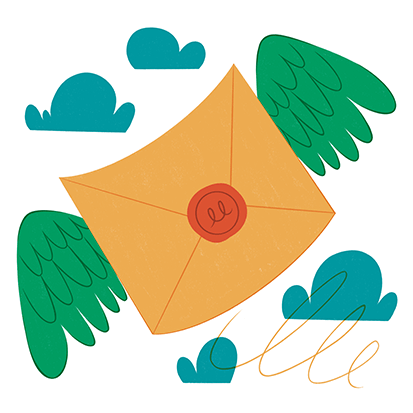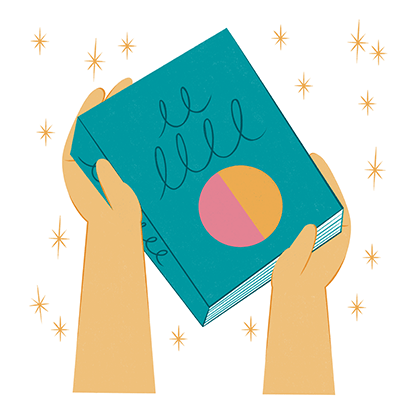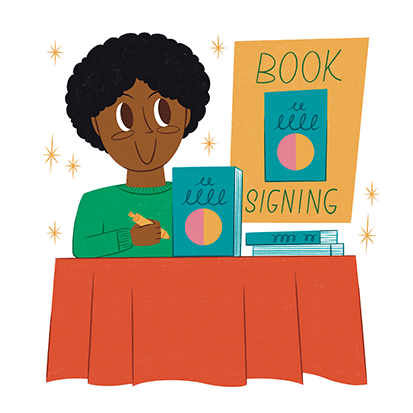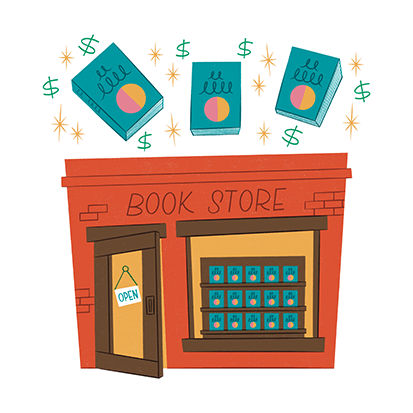We Make Your Success Even Simpler

Making your Submission
We welcome your submissions all year round, yet they must meet our specific criteria to be considered.
We will only contact those with books that interest us and generally will not offer feedback on books we do not accept for publication support.
- Your book may be submitted in PDF or Word and consist of several chapters to help us appreciate your style.
- We ask you to fill in the SUBMISSION form with as much detail as possible to help us to understand your book and goals better.
- We ask you to be patient as we have many submissions to review, and this on average takes over several months to review and respond to those we wish to talk with further.
- We ask you to ONLY consider any offers for publishing by Australian (or New Zealand, if applicable) agencies and publishers and to say NO to the UK, USA or other overseas publishing houses who prey on the innocent Australian and New Zealand authors. These ultimately in many, many cases, rip you off and leave you with no legal help or position to gain compensation. Shawline protects your rights and services are assured through our alliance to the APN and fair-trading laws, and it is almost impossible for a publisher in Australia or New Zealand to rip anyone off. Stay safe and protect yourself by staying in country for all your options.
Shawline Publishing Group Pty Ltd is a Hybrid model publishing company for the purposes of achieving affordable and realistic goals for our authors. Hybrid publishing companies behave just like traditional publishing companies in all respects, except that they publish books using an author-subsidised business model, as opposed to financing all of the upfront costs themselves, and in exchange for a higher-than-industry-standard share of sales proceeds returned to the author.
As a hybrid publisher, we must follow the expectations and regulations below:
- Define a mission and vision for its publishing program. A hybrid publisher has a publishing mission and a vision. In a traditional publishing company, the published work often reflects the interests and values of its publisher, whether that’s a passion for poetry or a specialisation in business books. Good hybrid publishers are no different.
- Vet submissions. A hybrid publisher vets submissions, publishing only those titles that meet the mission and vision of the company, as well as a defined quality level set by the publisher. Good hybrid publishers don’t publish everything that is submitted and often decline to publish.
- Publish under its own imprint(s) and ISBNs. A hybrid publisher is a true publishing house, with either a publisher or a publishing team developing and distributing books using the hybrid publisher’s own imprint(s) and ISBNs.
- Publish to industry standards. A hybrid publisher accepts full responsibility for the quality of the titles it publishes. Books released by a hybrid publisher should be on par with traditionally published books in terms of adherence to industry standards.
- Ensure editorial, design, and production quality. A hybrid publisher is responsible for producing books edited, designed, and produced to a professional degree. This includes assigning editors for developmental editing, copyediting, and proofreading, as needed, together with following traditional standards for a professionally designed book. All editors and designers must be publisher approved.
- Pursue and manage a range of publishing rights. A hybrid publisher normally publishes in both print and digital formats, as appropriate, and perhaps pursues other rights, in order to reach the widest possible readership. As with a traditional publisher, authors may negotiate to keep their subsidiary rights, such as foreign- language, audio, and other derivative rights.
- Provide distribution services. A hybrid publisher has a strategic approach to distribution beyond simply making books available for purchase via online retailers. Depending on the hybrid publisher, this may mean traditional distribution, wherein a team of sales reps actively markets and sells books to retailers, or it may mean publisher outreach to a network of specialty retailers, clubs, or other niche-interest organisations. At a minimum, a hybrid publisher develops, with the author, a marketing and sales strategy for each book it publishes, inclusive of appropriate sales channels for that book, and provides ongoing assistance to the author seeking to execute this strategy in order to get his or her book in front of its target audience. This is in addition to listing books with industry-recognised wholesalers.
- Demonstrate respectable sales. A hybrid publisher should have a record of producing several books that sell in respectable quantities for the book’s niche. This varies from niche to niche; small niches, such as poetry and literary fiction, require sales of only a couple thousand copies, while mass-market books require more.
- Pay authors a higher-than-standard royalty. A hybrid publisher pays its authors more than the industry-standard* royalty range** on print and digital books, in exchange for the author’s personal investment. Although royalties are generally negotiable, the author’s share must be laid out transparently and must be commensurate with the author’s investment. In most cases, the author’s royalty should be greater than 50% of net on both print and digital books.
- The criteria above point to functions that a reputable hybrid publisher is expected to perform. It’s up to each hybrid publisher to figure out, and explain, how it performs each function.
- Regardless of who pays for editorial, design, and production fees, it is always the publisher that bears responsibility for producing, distributing, and ultimately selling professional-quality books.
- An author-subsidised business model in no way relieves a publisher of its editorial, design, marketing, sales, and distribution responsibilities.
- In comparing hybrid publishers with vanity presses, it’s important to note that vanity presses are not selective in what they publish, nor are they set up to be. Therefore, it is better to think of vanity presses as self-publishing service providers, not publishers. In a self-publishing service provider/author relationship, it is the author who plays the publisher role.

Comprehensive Editorial Support
“AN EDITOR IS A PERSON WHO KNOWS MORE ABOUT WRITING THAN WRITERS DO BUT WHO HAS ESCAPED THE TERRIBLE DESIRE TO WRITE.” – E.B. WHITE
This is where we give your book the professional polish it deserves with our hand-selected team of highly experienced and specialised Australian and New Zealand editors. Our editorial services include Manuscript assessment, structural editing, copy editing and final proofreading before production and publishing commences.
We’ll work on the complete scope of book editing for your work from start to finish; proofreading, copy editing, line editing, and developmental editing. We consult and navigate with your input during the entire process.
Proofreading
Proofreading gets its name from the “proofs” typesetters produce before the final print run. The text has been laid out into pages, complete with photos, diagrams, tables, etc. These used to be called galley proofs (and still are when printed), but in these days of electronic publications, they’re more commonly called uncorrected proofs and usually come as a PDF file.
At this point, we will have set the manuscript text into the book’s final format. That means it’s too late to make any major structural changes or delete paragraphs and sentences, as this has a knock-on effect in the subsequent pages. It can cost a lot of time and money to redesign the book after such major changes. Proofreading comes at the end of the publication cycle. It’s the final check before the book is printed or, in the case of eBooks, before it is published and sent to distributors. For this reason, proofreading is intended to pick up the final typos and spelling mistakes and to correct inconsistencies, like making sure the word “proofreading” is always spelled as one word and not “proof-reading” or “proof reading.” In the case of printed books, our proof-readers also look for awkward word splits at the end of a line and ensure there is no ugly single line left at the top of the page from the previous paragraph (known in publishing as a widow) or at the bottom of the page, which really belongs with the paragraph on the next page (orphan). Proofreading is only done after the raw manuscript has already been edited. Before that, all our books go through the complete stages of editing required.
Copy Editing
Copy, in the publishing world, refers to the text. So, copy editing could just as easily be called text editing. It’s a word-by-word edit that addresses grammar, usage, and consistency issues. Our editors will check for typos and spelling errors along with correcting grammar, language, and syntax errors. They will also pay particular attention to punctuation such as commas, semicolons, and quotation marks.
Our editors work on a copy of the author’s manuscript, usually a Word file, using the track changes function and adding comments to explain any changes or make revision suggestions. The author can then go through each of the changes and accept or reject them one by one and make any revisions where necessary. We also discuss in conference with you the details of our suggestions.
Only when the author is completely satisfied with the plot, story structure, characterisation, settings, etc. is the manuscript ready for copy editing. And nobody, no matter how good, gets all that right with a first draft.
Structural & Line Editing
Line editing is a more intensive structural edit that focuses on the finer aspects of language – the flow of ideas, transition elements, tone, and style. Line editors expand their efforts to suggest changes to make sentences crisper and tighter by fixing redundancy and verbosity issues, while improving awkward sentence and paragraph construction without a full rewrite. Our editors will look at the manuscript using a holistic methodology with a review of key aspects of the manuscript: the narrative, vocabulary, structure, characterisation, style, and development.
Developmental editing
Development editing means the book gets a full, substantial, structural, developmental edit. This will often include everything that’s involved in proofreading and copy-editing, plus a detailed critique of the essential elements of the story (in the case of a novel), which include:
Setting - Timeline - Characterisation - Plot - Story structure - Pacing - Presentation - Marketability.
A developmental edit will come early in the publication process, while the author is still in the drafting stage. The author will have rewritten the manuscript a few times before it is ready for a developmental edit. Not every book needs developmental editing from a professional editor. Feedback from our competent beta readers can be enough to iron out all the wrinkles in the book’s structure. As with copy editing, the editor may use track changes to make revision suggestions directly onto a copy of the manuscript, but the developmental edit will usually include a separate critique document detailing — sometimes chapter by chapter — the changes the author could make to improve the areas listed above.
Award Winning Cover Designs

We design all your required formatting elements - E-Books, Paperback, Audio-Books, Hardcovers through to your marketing collateral.
Our industry-experienced designers target your desired audience with a unique, beautiful cover and internal design. Our designers receive a comprehensive brief, providing them with a mood board, competitor titles and the details needed to create the best book possible that aligns with your vision and brand.
Our book designer creates the cover and visual designs for your published book. This is a big task involving creativity most of all, but also an understanding of the content of the book, and even some business skills.
First of all, our book designer needs to know what the book is about. This is more than just reading the book; you have to figure out its essence while understanding what aspects make it marketable. And don’t forget about an eye-catching spine!
So what goes into the design? The designer might be hunched over a slant top desk labouring for hours over an elaborate cover, made from scratch (top notch art skills come in handy here); or they may be squinting for hours in front of a computer screen running software such as Adobe Photoshop or Illustrator. In both cases the job is labour intensive. Then they must incorporate the content with the cover, as well as the page layout and the typography. They must all come together to create a cohesive whole that is, once again, marketable.
Our book design is not just another art project anyone can do well. We can’t be too flippant, too statement-making, because while we are putting your heart and soul into your artwork, in reality, it’s only a representation of what’s inside. And the primary purpose of book design is to make a consumer pick it up and open the book for the words inside rather than gaze at the masterpiece of your awesome cover design.
Comprehensive Publication Process

We take care of all of your publishing requirements from eBook to POD (print-on-demand), and placing your book in the best sites and retail stores worldwide, with local access to some of Australia’s and New Zealand's major retailers as well as print-on-demand services. This means you can decide how many books you want to print and when. Your book will reach one million readers with no stress to you, only profitable returns.
Possibly the most overlooked and underappreciated part of the publication process is the work of the production department, which develops and designs the cover and interior of each book, along with coordinating the printing and binding of the finished products. Readers do in fact judge a book by its cover, and getting it right is something the largest publishers do extremely well.
Awareness of the production schedule for your book is important; knowing when each part of the design and layout process is coming helps you determine when it’s appropriate to ask any questions you might have—and to gently offer your own ideas while there’s still time for them to be taken into consideration. As long as you acknowledge your publisher’s control, you’re likely to find the house will be receptive to your input if it’s based on your keen sense of the market. Always make suggestions a few weeks in advance of the date the production schedule indicates each decision is being made. Don’t be overbearing or a pest. Make intelligent suggestions based on your knowledge of the need your book is filling in the marketplace, and you will be seen as an asset, not just another author looking to promote her own interests. Speak up too late, and there’s no turning back. Your publisher’s team is making all the decisions, remember; they bought the rights to your writing and can do what they want.
Our close attention to detail will give your book a truly professional feel. Paper density and quality, typesetting font and styles, binding and trim size are just the start of the intricate details that a professional publisher knows. We make sure that your book is bound perfectly, that appropriate paper stock and embellishments are used, and that it is typeset so your text is legible and appealing.
Book production is the process required to turn a raw manuscript into a final printed product or eBook. Book production at its most basic includes editing, design, formatting, printing and eBook conversion. Book production is an essential part of professional publishing.
You’ve done your research. You’ve decided that self-publishing is the route for you. It can be very daunting trying to figure out exactly where to start and who to approach.
Furthermore, making the wrong decision can result in a needless waste of money – something that, as a self-publishing author, you may not have very much of to begin with.
One of the first questions you need to ask yourself is: What is my vision for the book? The answer to this question will determine a lot of things, one of which is whether you should approach a company for professional book production, or just your local printer to print and bind your books from a Word file supplied by you.
If you would like to publish your book professionally with an emphasis on bookstore distribution, then using Shawline Publishing is the best course of action. Bookstores and book marketers are reluctant to take on books that look self-published – and while you may not easily tell the difference, they certainly can. Choosing to go the bookstore route will also mean that large-run litho printing may be necessary since the unit costs of short-run digital printing are just too high and you’ll likely make too little money to cover your costs. Each member of the distribution chain requires a percentage of the retail price and once these percentages have been deducted, the balance must cover all your production costs.
Great visions and bookstore distribution usually require a larger capital outlay – anything from around 5 to 10K for a single colour text-based book to a couple of hundred thousand for a full colour hardcover coffee table book. These figures are fairly low when compared to the production budgets of large publishing houses that easily extend into hundreds of thousands.
You might understand now why it’s hard to pick up a publishing deal by the larger publishers. They’re investing a ton and need to know they’ll get it back. Hybrid publishers like us will offer you lower costs with higher royalties so all the effort is removed and all the focus on marketing is enhanced to your benefit.
Since this website is geared towards professional book production and distribution, we’re going to focus on the steps involved in book production from this perspective.
Editing and manuscript preparation
This includes manuscript evaluation; editing; translating; obtaining and verifying permissions; proof-reading. Depending on the book, it can also include commissioning artwork, briefing artists and photographers, and conducting picture research.
PRODUCTION
This includes book design; scanning; typesetting; creating DTP (desktop publishing) artwork; cover design and makeup; ISBN application; barcode generation; copyright insertion; supplying page proofs; and creating a print-ready PDF file.
Printing or eBook Creation
This covers large-run litho printing (usually 1000 copies or more); low-run digital printing (up to 500 copies); print-on-demand (printing each book as it is purchased); and eBook creation.
Finding an Author Services or Book Production Company
Your first job when choosing to self-publish is to find a suitable author services or book production company that will carefully shepherd your book through the production process. An author services business and book production company are basically the same thing – they usually both provide a full-spectrum production service from manuscript evaluation and editing right through delivery of a final printed product or eBook.
If you are serious about your publishing endeavour and intend to distribute on a larger scale through bookstores, then you need to become a Shawline Published author. One way to tell whether you’re dealing with a professional company offering true publishing quality is to look at their production charges. Good cover design does not come cheap, and neither does good editing. At the same time, don’t automatically assume that a high price tag guarantees a good job! A barometer of whether an author services company will do your book justice or not lies in their previous production experience and the quality of the work that they have completed in the past. Ask to look at previous samples of our work if necessary to see if their quality matches the price.
SCHEDULING
Once a title is scheduled for publication and a release month has been set, the work begins in earnest. The time from a book’s acquisition to the day it hits shelves is typically anywhere from one to two years. It depends on how timely your topic is, how many titles are under contract in your category and when we think your book will have the greatest chance of success in the market. We discuss the seasonal schedule with our authors and position of our titles to maximise sales potential. The biggest consideration is competition, both in-house and from other companies. Publishing competitive titles concurrently dilutes the sales potential of the entire list. This is another reason it’s essential to meet all your deadlines for rewrites, revisions and reviews: Failing to do so can endanger the carefully choreographed timing designed to maximise your book’s sales prospects.
The schedule is also set to build interest and potential sales from the anticipation of the book being released. The minimum timeline we work in is 12 months, allowing for the production and the pre-sale period where the book information is available 6 months before the actual release. This is the most important part of the process to create the success we desire for your book.
NUMBERS
Upon agreeing to publish your manuscript, we already know the number of copies your book needs to sell to be profitable—for the house and for you. Profitability is the cornerstone of everything we do with regard to publication, and it’s often referred to as the “budget number” for each book.

Full Promotional Marketing
The exceptional marketing team will make your book known about and available worldwide and promote it in print media, radio and online, with support for your book launch and signings at Australia's leading book retailers, as well as libraries and wherever you can gather excited readers. Our experienced team support your promotional materials, highlighting the key sales points that readers and retailers are looking for. Best of all, we also offer your book to reviewers , media and awards to help get your credibility established.
There are three major components to your book marketing process: advertising, promotion and publicity. Advertising includes paid placements of a book in print or other media. Promotion is the creation of anything that draws attention to a book, from corrugated floor and shelf displays in bookstores to bookmark and T-shirt giveaways. Publicity is the art of generating print and media pieces about an author and the book. The key to selling copies at a high sell-through (meaning people actually buy the books off the shelves) in today’s marketplace is to generate lots of publicity. The key to effective publicity is to focus on the area that will generate the most sales for your book.
Marketing is not something that starts or stops at any given time. Ideally, it’s an integral part of your writing career that begins long before you land a book deal and continues for as long as you call yourself an author.
Successful marketing is all about creating the appropriate combination of advertising, promotion and publicity within the assigned marketing budget to generate interest that results in sales. If something is missing from the marketing plan and you offer to help, make sure you get your publisher’s approval, and be willing to work to make it happen. Be prepared to partner with your publisher to promote your book, keeping us informed of your own efforts and listening carefully to the in-house expertise so that together we can present a unified marketing plan. Success is a combined effort of planning, timing and budgeting for all involved.
Great Return For Your Talent

Our team will administer key aspects of marketing and promotion with aims to maximise our sales and return from all sale channels.
We will use all means available in traditional and modern day marketing techniques, and focus our efforts on marketing your book to the book trade through catalogue placement and promotions. We become your personal promotional agency without anything more to pay! You will also be supported with extended opportunities and will need to consider your own plan and budget for anything additional to help you gain further sales and market awareness.
Seasonal lists of titles are typically sold months in advance of publication, so most titles being presented are months from the actual publication and release date. This gives us, the publisher, plenty of time to assess all orders, make adjustments as necessary and print the right number of copies for distribution to the marketplace.
A targeted distribution with a high sell-through trumps having your book placed inside every single store in the country. What makes distribution such a delicate dance is that books are always returnable to the publisher’s warehouse if bookstores can’t sell them. So while you want your book to be readily available to your audience, there’s also a danger in printing and distributing too many copies. Selling large quantities to booksellers without proper marketing support is equivalent to a low sell-through and a high rate of return, which can spell doom to a promising career. (Translation: If your first book isn’t profitable, your chances of publishing a second one are slim.)
DISTRIBUTION
The most misunderstood and misconstrued term in the wide scope of publishing is distribution. For the largest trade publishers, selling and distribution go hand-in-hand. Proper distribution is not simply listing a title in the database of a large book outlet or mailing postcards to bookstores around the country.
Actual distribution begins with the process of sales presentations, coupled with skilfully matching booksellers with books that sell copies at a very low rate of return. Different genres—as well as the publishing formats of hardcover, trade and mass-market paperbacks—resonate with consumers who shop in specific locations. Distribution in the truest sense is matching the category, format and price to the right outlet in quantities that make sense for both the publisher and bookseller.
ON SALE
The cycle is now complete: books have been produced and distributed, copies are for sale online and on store shelves, and marketing plans are, hopefully, bringing enough attention to particular titles that consumers are buying books. It may seem daunting, but it’s actually both repetitive and consistent. As an author, understanding how your book marketing works its way through the process gives you a head start. Never forget that publishing is a business, your manuscript is a product and you, as the author, are a commodity.
When you sign that contract, your manuscript is packaged, priced and promoted with aims to make money for all involved. Your publisher has acquired your work to build profit from your writing. It’s not so much about great writing as it is about a good book that can generate interest and potential revenue, and how much value you as an author and your writing bring to the market. As long as your writing can create audience and you continue to produce entertaining, informative manuscripts on schedule, you have a very good chance of maintaining a career as a writer but this can take many years, so you have to keep at it. Having a product in the market is the first step, marketing it ongoing is the purpose to aid the growth of your brand and potential sales. We will work with you all the way to support your goals for our book.


